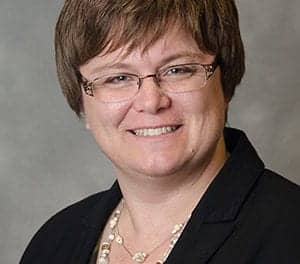HearUSA Inc, West Palm Beach, Fla, has begun to roll out the AARP Hearing Care Program across the country following the successful introduction of the program in nine states.
The AARP Hearing Care Program from HearUSA, available exclusively to AARP members, aims to help the millions of Americans age 50 and over who have hearing loss. While 95% of Americans with hearing loss could be successfully treated with hearing aids, only about 22% (6.35 million) currently use them, according to the Hearing Loss Association of America.
“Only about one in four Americans who could benefit from hearing amplification currently choose to do so,” said Stephen Hansbrough, CEO and chairman of HearUSA. “We believe that this program will change that for the better.”
Through the program, AARP members have access to a nationwide network of credentialed health care providers who can help them manage their condition through rehabilitation and ongoing consultation. The program facilitate discounts on state-of-the-art hearing aid technology, extended warranties, and battery supplies.
The program was introduced on a limited test basis to all HearUSA company-owned hearing care centers and the company’s network of affiliated professional hearing care providers in Florida, New Jersey, New York, Massachusetts, Ohio, Michigan, Missouri, North Carolina, and Pennsylvania. After a successful pilot offering, the program’s expansion into an additional 24 states will be completed by the end of this year, according to the company.
HearUSA operates a network of more than 2,000 hearing care providers, including 178 company-owned locations.
By the end of 2011, HearUSA expects the program will be available to AARP members in all 50 states and the US territories through a nationwide network of more than 3,500 credentialed hearing care providers.
“As Baby Boomers age, many will face hearing loss that can be improved simply by using a hearing aid. It is critical, however, that products and services made available to AARP members reflect exceptional quality and value,” said David Mathis, senior VP, Health Products and Services at AARP Services Inc. “In an independent survey of 268 members during the Hearing Care Program Pilot, all respondents said they were satisfied with the HearUSA program and gave the program a score of 90% or higher, so we are pleased that HearUSA will now begin to make it available to AARP members across the country.”
Dr Cindy Beyer, audiologist and HearUSA senior VP, said the program "has been designed to address the concerns and confusion that prevent so many older Americans from receiving proper treatment for their hearing loss.”
According to the National Institute on Deafness and Other Communication Disorders, there is a strong relationship between age and hearing loss. While hearing impairment is prevalent in 18% of American adults 45 tp 64 years old, some 30% of adults 65 to 74 years old and 47% of adults 75 years or older suffer from significant hearing loss.
The Hearing Loss Association of America reports:
- 36 million Americans (one in every 10) have hearing loss.
- As Baby Boomers reach retirement age, this number is expected to rapidly climb and nearly double by 2030.
- The prevalence of hearing loss increases with age, and most hearing loss develops over a period of 25 to 30 years.
- Among seniors, hearing loss is the third most prevalent, but treatable disabling condition, behind arthritis and hypertension.
- While the vast majority of Americans (95%) with hearing loss could be successfully treated with hearing aids, only 22% (6.35 million) currently use them. Only 5% of hearing loss in adults can be improved through medical or surgical treatment.
“Beyond the statistics, it’s important to recognize the impact of untreated hearing loss on one’s quality of life and how proper hearing can improve so many aspects of our daily lives,” Beyer said. “Studies show that hearing aids can improve personal income, increase intimacy and warmth in family relationships, encourage social participation, and provide a better sense of control over life events and one’s physical health.”
AARP is a nonprofit, nonpartisan membership organization that helps foster independence and choices for people 50-plus. AARP Services is a wholly-owned taxable subsidiary of AARP, which manages the provider relationships for and performs quality control oversight of the range of products and services that carry the AARP name and are made available by independent providers as benefits to AARP’s millions of members.
[Source: HearUSA]




